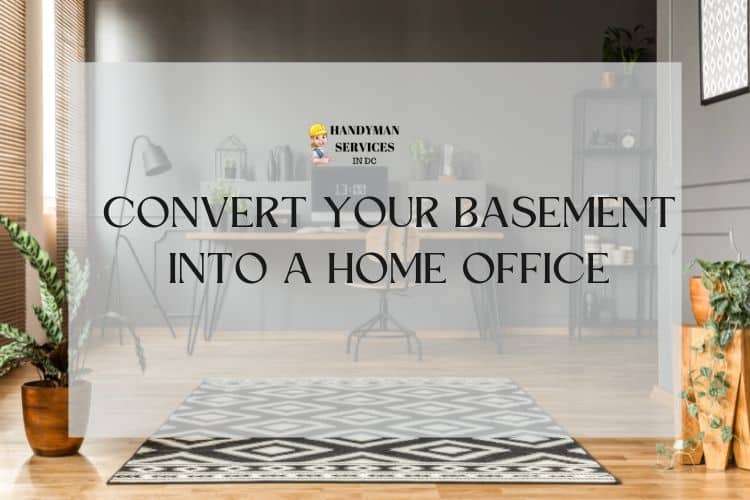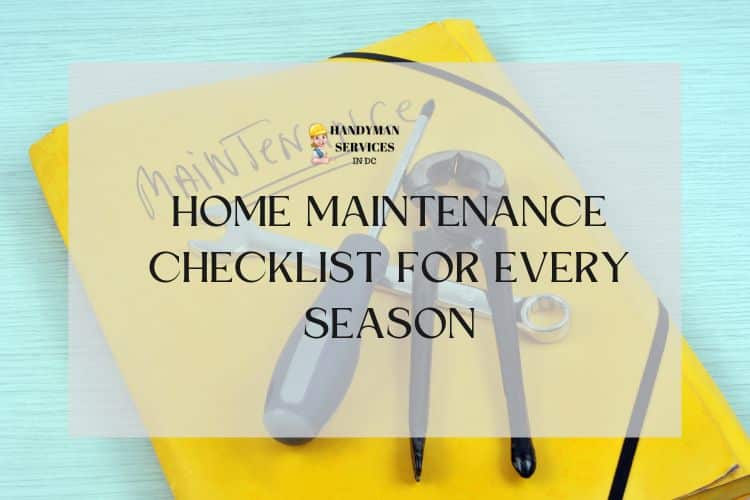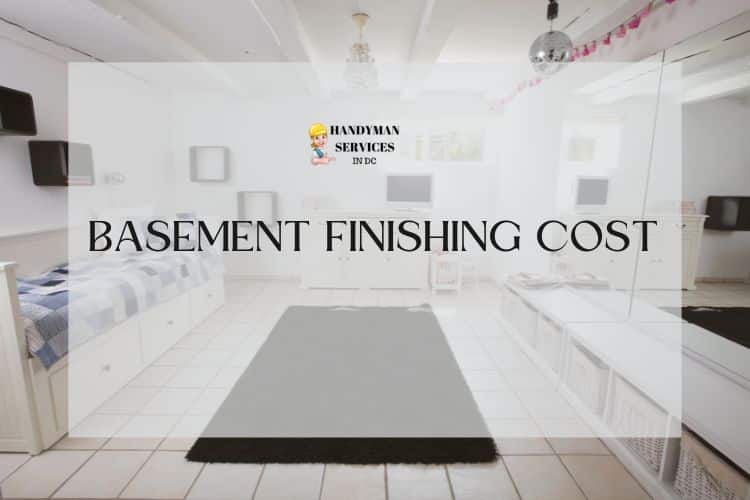Home offices are in high demand these days, especially with people working from home due to the pandemic. There are some definite benefits to this arrangement – like saving on commuting costs and having more flexible hours – there are also some challenges. One of the biggest challenges is creating a productive home office.
If you’re finding that your office environment isn’t entirely cutting it in terms of productivity and comfortable workspace, don’t despair. Some easy and inexpensive office renovation ideas can help make your space more conducive to productivity.
If you have an extra basement space, that could be the perfect spot for your new office! We have the perfect guide for converting your basement into a comfortable home office. When remodeling your home office, you first need to look at your current space and assess what’s working and what isn’t. Once you’ve done that, you can start to make some changes.
Convert Your Basement Into A Home Office
Choose the right spot
The first step is to decide how much room you need for your home office. Once you have a general idea, start measuring the area to get a more accurate idea of the size. Once you know the dimensions, you can start planning where everything will go.
You must plan your basement renovation and choose the right spot for your home office. You want to make sure that the space is well-lit and has enough room for all of your office equipment, and maybe you will want to add a separate entrance if you don’t have one. If you have a window in your basement, that would be the ideal spot for your office.
Remove any clutter
The next step is to declutter your basement and remove any unnecessary items. This will make the space feel more open and spacious. If you have any old furniture or appliances you no longer use, consider donating them or selling them online.
Make a budget
The next step is to make a budget for your basement home office renovation. You will need to factor in the cost of materials, labor, and any other miscellaneous costs that may come up. If you are planning on doing the work yourself, you will need to factor in the cost of renting or buying any tools or equipment that you don’t already have.
Get started on the basics
Once you have a plan and a budget, you can start working on the basics of your home office renovation. This includes things like painting, installing flooring, and putting up drywall. If you are hiring someone to do this work for you, get multiple quotes before making a decision.
Soundproof your basement office
One of the best ways to increase productivity in your home office is to soundproof the space. This will help to minimize distractions and allow you to focus on your work. There are a few different ways that you can soundproof your basement home office, including:
- Adding insulation to the walls
- Installing soundproofing panels
- Soundproofing the doors and windows
Create storage space
One easy way to do this is by installing shelves or cabinets. This will give you a place to store your important documents and supplies, so they’re within reach when you need them. Here are some storage ideas:
Wall-to-wall shelving:
Wall-to-wall shelving creates storage space by utilizing wasted wall space. It is especially great for tiny homes and apartments where floor area is limited.
Built-in cabinets:
Built-in cabinets are a great way to add storage without taking up too much place. If you have an unused alcove or other nooks, consider cubby-style wall units to add style and function to your home office.
Freestanding shelves:
Freestanding shelves offer another storage solution that doesn’t require permanent installation. These can be moved around as needed and are great for holding everything from books to decor items.
Baskets and bins:
Baskets and bins are a great way to organize small items like paper clips and pens. They can also store more oversized items like files and folders.
Desktop organizers:
Desktop organizers are a must-have for any home office. They help keep your desk tidy and can hold everything from pens and paper to notepads and sticky notes.
File cabinets:
File cabinets are necessary if you have a lot of paperwork to store. They come in vertical and lateral styles, so you can choose the one that best fits your needs.
Modular storage:
Modular storage is a great way to customize your storage needs. It allows you to add or remove storage as needed and can be used for everything from files to office supplies.
Wall mounted units
If you have a small basement office, one of the best ways to maximize space is to use wall-mounted units. This type of storage doesn’t take up any floor space and can be used for everything from files to supplies.
Add some color
Adding a pop of color to your home office can help to create a more inviting and inspiring space. Consider painting an accent wall or adding some colorful art or accessories. Here are some ideas:
Accent wall:
An accent wall is a great way to add color without going overboard. Choose a bold color to compliment the rest of your office decor, and paint one wall in the room.
Art:
Hanging artwork or photos in your home office can add color and personality to the space. Choose pieces that inspire you and make you feel motivated to work.
Accessories:
Adding colorful accessories like rugs, throws, or pillows can also help liven up your home office. Choose items that compliment the room’s color scheme and make you feel comfortable.
Lighten your space
Making your home office brighter can help to create a more inviting and uplifting space. Consider adding additional lighting or opening the window coverings to let in more natural light. Here are some ideas:
Additional lighting:
Adding additional lighting to your home office can help brighten the space and make it feel more inviting. Table lamps, floor lamps, and desk lamps are all great options.
Enlarge small windows
If you have small windows in your home office, consider enlarging them to let in more light. This will not only brighten up the space but also make it feel larger. You may need a permit and the help of a licensed contractor for this project, so check with your local building department first.
Skylights:
Adding a skylight to your home office is a great way to bring natural light. Skylights are especially beneficial if you don’t have any windows in your office space.
Consider your office furniture
When selecting office furniture, make sure to choose functional and stylish furniture. Here are some tips for choosing the right pieces:
Choose a desk that fits your needs:
Your desk is the most essential piece of furniture in your home office, so make sure to choose one that fits your needs. If you have a lot of paperwork, choose a desk with plenty of storage space. If you have a small space, choose a desk that doesn’t take up too much room.
Ergonomic office chair:
An ergonomic office chair is a must-have for any home office. It helps to keep you comfortable while you work and can reduce the risk of back pain or other injuries.
Versatile office furniture
Office furniture that can be used for multiple purposes is a great way to save space. A desk that can double as a work surface and a place to store files is a great option. A bookshelf that can also be used as a divider is another great space-saving idea.
Add a coffee station or kitchenette
If you like to have coffee or snacks while you work, consider adding a coffee station or kitchenette to your home office. This will give you a place to store food and drinks, so you don’t have to keep going upstairs. Plus, it will help you stay fueled throughout the day and make working from home more enjoyable.
Add some greenery
Adding some plants to your home office can help to create a more inviting and serene space. Plants can also help to improve air quality and reduce stress levels. Here are some easy-to-care-for plants that are perfect for the home office:
Aloe vera: Aloe vera is a succulent that is easy to care for and doesn’t need much light or water. It’s also known for its healing properties and can help to soothe burns or cuts.
Snake plant: Snake plants are also easy to care for and don’t need much light or water. They’re known for improving air quality by filtering out toxins.
Spider plant: Spider plants are easy to care for and thrive in indirect sunlight. They’re known for their ability to filter out toxins from the air, and they also produce oxygen.
Pothos: Pothos is a type of vine that is easy to care for and can tolerate low light levels. They’re known for their ability to purify the air and reduce stress levels.
Bamboo palm: Bamboo palms are tropical plant that is easy to care for and does well in indirect sunlight. They’re known for their ability to improve air quality, and they also produce oxygen.
Peace lily: Peace lilies are flowering plant that is easy to care for and does well in low-light conditions. They’re known for their ability to filter out toxins from the air, and they also help to reduce stress levels.
Schefflera: Schefflera is a tropical plant that is easy to care for and does well in indirect sunlight. They’re known for their ability to improve air quality, and they also produce oxygen.
Think about Finishing touches
Once the basics are taken care of, you can add the finishing touches to your home office. These are just a few ideas for how
Add Light Fixtures:
Adding some light fixtures to your modern home office can help to create a more inviting and stylish space. Table lamps, floor lamps, and ceiling fixtures are all great options.
Make it your own
Your home office should be a reflection of your personal style. Here are some ideas to make your space uniquely yours:
Add personal photos:
Hanging personal photos in your home office can help to add personality to the space. Choose photos that inspire you and make you feel motivated to work.
Display items that inspire you:
If you have any items that inspire you, consider displaying them in your home office. This could be anything from a piece of art to a family heirloom.
There are countless ways to make your home office more productive, comfortable, and stylish. By following these tips, you’ll be well on your way to creating the perfect space for you.
Summary:
There are a few key things to consider when renovating your home office to improve productivity, comfort, and style. Ergonomic office chairs, sufficient lighting, and adding personal touches are essential factors. By following these tips, you’ll be well on your way to creating the perfect space for you.
FAQ's
how much does it cost to convert a basement into a home office?
The cost to convert a basement into a home office depends on a variety of factors, including the size of the space, the level of finishes, and whether any major structural work is needed. Generally speaking, the cost can range from a few thousand dollars to upwards of $20,000
What are some tips for designing a productive home office?
Some tips for designing a productive home office include: ergonomic office chairs, sufficient lighting, adding personal touches, and incorporating plants. By following these tips, you’ll be well on your way to creating the perfect space for you.
Can I deduct my office basement renovation?
Yes, you may be able to deduct your office basement renovation on your taxes. Speak to a tax professional to see if you qualify for any deductions.






